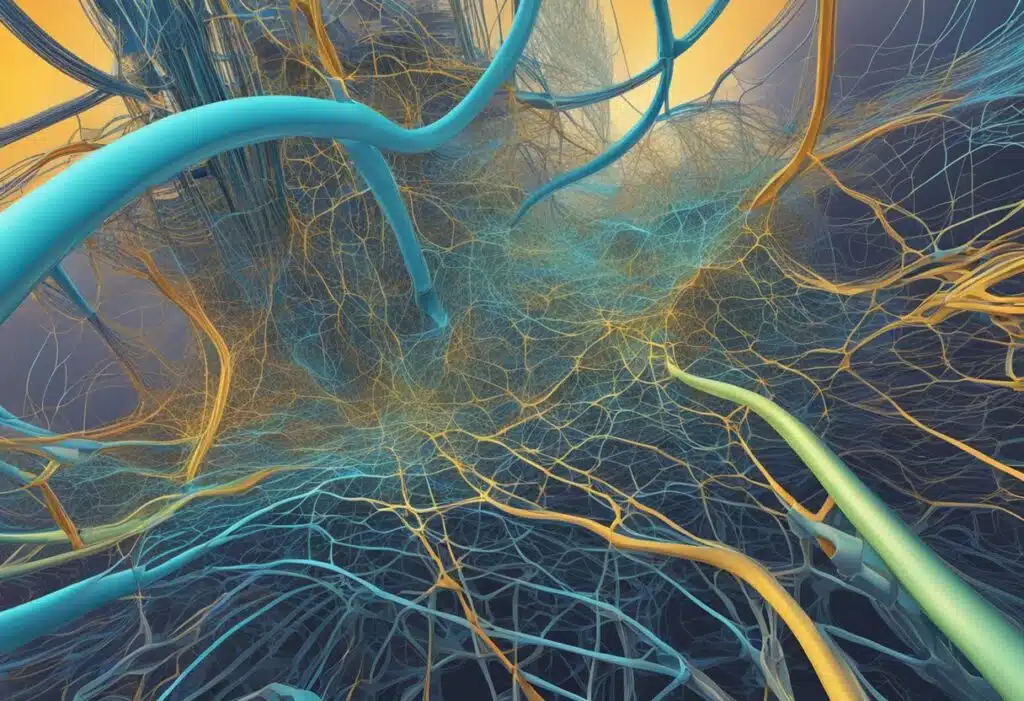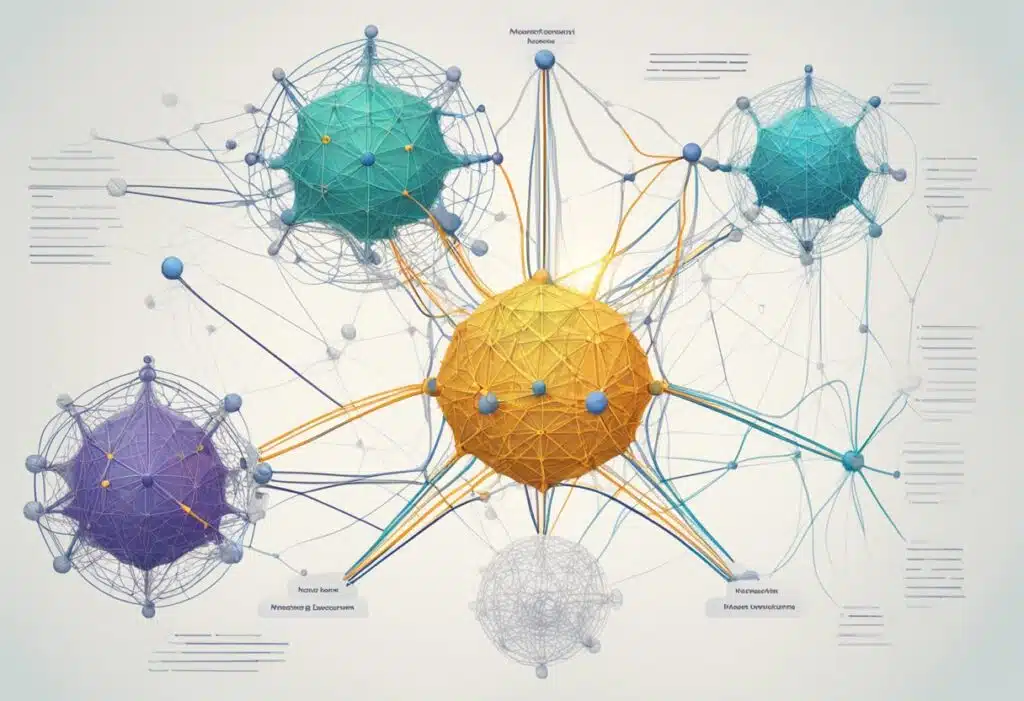
Deep Learning and Machine Learning’s Race to AI Supremacy
Let’s explore the differences between Deep Learning (DL) and Machine Learning (ML). These two subfields of artificial intelligence (AI) play crucial roles in enabling computers to learn and make decisions. Buckle up, and let’s dive in!
Machine Learning (ML):
- Definition: ML is a subset of AI that empowers systems to learn autonomously from data and improve without explicit programming.
- How it works: ML algorithms analyze data, learn from patterns, and make informed decisions. They operate by understanding known relationships in input data and applying that knowledge to previously unseen situations.
- Applications: ML spans various domains, from malware detection in IT security to weather forecasting and customer behavior prediction. It integrates intelligence into business processes, enhancing decision-making accuracy.
- Types of ML:
- Classical Machine Learning: Utilizes algorithms for data analysis. Examples include decision trees, regression, and k-nearest neighbor methods.
- Requirements: ML involves complex mathematics and programming (often using Python) to achieve desired functionality and outcomes.
Deep Learning (DL):
- Definition: DL, a subset of ML, leverages artificial neural networks to mimic the learning process of the human brain. It excels in handling complex data.
- Data Requirements:
- DL thrives on large datasets. It learns intricate patterns from vast amounts of information.
- Unlike ML, which can train on smaller datasets, DL needs substantial data for robust performance.
- Learning Process:
- ML: Requires more human intervention to correct and learn from mistakes.
- DL: Learns autonomously from the environment and past errors.
- Training and Accuracy:
- ML: Shorter training time but often lower accuracy.
- DL: Longer training time but higher accuracy.
- Correlations:
- ML: Makes simple, linear correlations.
- DL: Excels at non-linear, complex correlations.
- Hardware:
- ML: Can train on a CPU (central processing unit).
- DL: Requires a specialized GPU (graphics processing unit) for training due to its complexity.
In summary, ML is a broader category that encompasses various algorithms, while DL specifically refers to deep neural networks. Both have distinct advantages and are chosen based on data complexity and volume. If you’re eager to build ML skills, consider enrolling in Stanford and DeepLearning. AI’s Machine Learning Specialization. Read more
Deep Learning vs Machine Learning

Let’s revisit the distinction between Deep Learning (DL) and Machine Learning (ML). These two subfields of Artificial Intelligence (AI) play crucial roles in enabling computers to learn and make decisions. Buckle up, and let’s dive in!
Machine Learning (ML):
- Definition: ML is a subset of AI that enables systems to learn from data and improve over time without being explicitly programmed. Read more
- Algorithms: It includes a variety of algorithms like decision trees, support vector machines, and linear regression.
- Data Handling: ML algorithms can handle smaller datasets and still perform well.
- Human Intervention: More human intervention is needed for tuning and correcting the algorithms.
- Training Time: Generally, ML algorithms require less time to train.
- Accuracy: They tend to have lower accuracy, especially with complex tasks.
Deep Learning (DL):
- Definition: DL is a specialized subset of ML that uses layered neural networks to simulate the human brain’s processing. Read more
- Neural Networks: These networks can learn and make intelligent decisions on their own.
- Data Handling: DL requires large amounts of data to perform accurately.
- Human Intervention: It requires minimal human intervention once the network is trained.
- Training Time: DL models take longer to train due to their complexity.
- Accuracy: They are highly accurate, especially in tasks like image and speech recognition.
Overlap and Differences:
- Overlap: Both ML and DL learn from data, but DL can automatically discover the representations needed for feature detection or classification from raw data.
- Differences: The main difference lies in the approach to learning. ML algorithms require structured data, while DL algorithms work with layers of neural networks and unstructured data.
Applications:
- ML Applications: Spam detection, recommendation systems, and market forecasting are common ML applications.
- DL Applications: DL is used in autonomous vehicles, advanced image recognition, and natural language processing tasks.
Future Prospects:
- ML: It will continue to evolve and be applied to problems where patterns and relationships are more straightforward.
- DL: As computational power increases, DL will likely become even more prevalent in solving complex, data-rich problems.
For those interested in exploring these topics further, Coursera offers a comprehensive guide that explains the nuances and provides a pathway to start building skills in AI, ML, and DL. Read more
Let’s illustrate the differences between Deep Learning (DL) and Machine Learning (ML) with a concrete example:
Imagine you’re developing a system to recognize and categorize images of animals. You have thousands of images labeled with the correct animal name, and you want your system to learn from these images so it can correctly identify animals in new, unlabeled images.
Machine Learning Approach:
- Data Preparation: You start by extracting specific features from each image, such as edge detection, color histograms, or texture analysis. These features are carefully chosen and engineered to help the algorithm understand the content of the images.
- Algorithm Selection: You might choose a support vector machine (SVM) or a random forest classifier to learn from these features. The ML algorithm will use the labeled data to learn the relationship between the features and the animal categories.
- Training: The algorithm learns by adjusting its parameters to minimize errors during the training phase, using the labeled images as a guide.
- Prediction: Once trained, the ML model can take a new image, extract the same features, and use the learned parameters to predict the animal category.
Deep Learning Approach:
- Data Preparation: Instead of manually extracting features, you feed the raw pixel data of the images directly into a neural network.
- Neural Network Architecture: You design a convolutional neural network (CNN), which is a type of deep neural network particularly suited for image recognition.
- Training: The CNN automatically learns to identify features that are important for classification during the training process. This includes layers that act as feature detectors and other layers that combine these features to make predictions.
- Prediction: Once trained, the CNN can take a new image and autonomously process it through its layers to predict the animal category without any manual feature extraction.
The key difference here is that in ML, feature extraction is manual and based on domain knowledge, whereas in DL, the system learns to identify the features by itself, which can be particularly advantageous for complex tasks like image recognition.
For more detailed examples and explanations, you can explore comprehensive guides and tutorials that delve into the practical applications of these technologies. Read more
How do machine learning and artificial intelligence relate to each other?
Machine Learning (ML) and Artificial Intelligence (AI) are closely related fields that often intersect, but they are not identical. Here’s how they relate to each other:
- Artificial Intelligence (AI): AI is a broad field that aims to create machines capable of performing tasks that typically require human intelligence. This includes problem-solving, recognizing speech, translating languages, and more. AI systems can be rule-based or learn from data.
- Machine Learning (ML): ML is a subset of AI that focuses on the development of algorithms that enable computers to learn from and make predictions or decisions based on data. Rather than being explicitly programmed for each task, ML systems learn from previous experience.
In essence, ML is a pathway to achieving AI. While AI encompasses a wide range of technologies, including ML, deep learning, neural networks, and natural language processing, ML specifically refers to the capability of systems to learn from data and improve over time1. It’s one of the primary methods used to advance AI technologies and applications.
For a deeper understanding, you can explore resources that explain the nuances and provide pathways to start building skills in AI and ML. Read more
Here are some tutorials and resources
to help you learn more about Deep Learning (DL) and Machine Learning (ML):
- Deep Learning vs. Machine Learning: A Comparative Guide:
- This tutorial on DataCamp provides an overview of AI, explores the differences between ML and DL, and discusses their use cases and benefits. It’s a great starting point for understanding these crucial disciplines.
- Read more
- Deep Learning vs. Machine Learning: A Beginner’s Guide:
- Coursera offers a beginner-friendly guide that explains the relationship between AI, ML, and DL. Learn about their distinctions, applications, and how to get started with learning.
- Read more
- Introduction to Deep Learning | Machine Learning vs. Deep Learning (Video):
- In this MATLAB Tech Talk, you’ll explore the differences between deep learning and machine learning. The video provides examples and helps you decide which method to use for solving machine learning problems.
- Watch the video
Feel free to explore these resources based on your interests and learning preferences.
Happy learning!